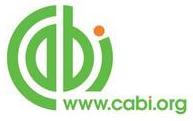Survey on Sample Sizes of Postgraduate Theses in Agricultural Education and Extension in Universities of Nigeria
DOI:
https://doi.org/10.26725/JEE.2019.1.31.6200-6208Keywords:
Post graduate thesis, Confidence level, Margin of error, Population, Sampling error, Survey, NigeriaAbstract
The study focused on the representativeness of the sample sizes generated for populations under study in survey studies in Agricultural Education and Agricultural Extension. The study was carried out in Nigeria. A total of 4561 completed survey theses submitted to the Departments of Agricultural Education and Agricultural Extension in federal universities in Nigeria for the award of various postgraduate degrees between 2008 and 2018 were studied. The objectives of the study were to report the effect of sample size on the confidence level and margin of error of the generated data and to determine the frequently cited formula for generating sample sizes and their implications. The most frequently cited method for generating sample sizes was reported. Findings further revealed the problems associated with using nonstatistical methods to generate sample sizes. The study recommended the use of mathematically proven formula in determining sample sizes in survey studies to generate statistically dependable, reliable and generalizable data.References
Ali, A. (2006). Conducting research in education and the social sciences. Enugu, NG: Tian ventures.
Anaekwe, C. M. (2007). Basic research methods and statistics in education and social sciences. Onitsha, NG: Sofie Publicity and Printry Ltd.
Bogdan, R.C. & Biklen, S.K. (1982). Methods of social research. Boston; Allyn and Bacon Inc
Cohen, L., Manion, L. & Morrison, K. (2009). Research methods in education (6th Ed.). Abingdon, Oxon; Routledge.
Creswell, J. (1994). Research design, qualitative and quantitative approach; London; Sage publications
Eboh, C.C. (2009). Social and economic research. Enugu, Nigeria; African Institute of Applied Economics
Emmel, N. (2013). Sampling and choosing cases in qualitative research: A realist approach. London: Sage.
Field Surveys Team. (2014). Calculating the right survey sample size. Retrieved 23rd May, 2016, from http://fluidsurveys.com/university/calculating-right-survey-samplesize/
Francis, J. J., Johnston, M., Robertson, C., Glidewell, L., Entwistle, V., Eccles, M. P. & Grimshaw, J. M. (2010). What is an adequate sample size? Operationalising data saturation for theory-based interview studies. Psychology and Health, 25, 1229–1245. doi:10.1080/08870440903194015
Fugard, A. J. & Potts, H. W. (2015). Supporting thinking on sample sizes for thematic analyses: A quantitative tool. International Journal of Social Research Methodology. doi:10.1080/13645579.2015.1005453.
Guest, G., Bunce, A. & Johnson, L. (2006). How many interviews are enough?: An experiment with data saturation and variability. Field Methods, 18, 59–82. doi:10.1177/1525822X05279903
Kothari, C.R. (2004) Research Methodology Methods and Techniques. 2nd Edition, New Age International Publishers, New Delhi
Kume, H. (1991). Statistical methods for quality improvement. Tokyo; 3A Corporation.
Mustafee, S. (2014). Statistical methods for agricultural science. New Delhi; Scientific International PVT Ltd.
Nwana, O. C. (1981). Introductory to educational research. Ibadan: Heinemann Educational Books Ltd.
Onwuegbuzie, A. J. & Leech, N. L. (2007). A call for qualitative power analyses. Quality & Quantity, 41, 105–121. doi:10.1007/s11135-005-1098-1
Uzoagulu, A. E. (2011). Practical guide to writing research project report in tertiary institutions. Enugu, NG: Cheston Publishers.
Downloads
Published
How to Cite
Issue
Section
License
Authors who publish with JEE agree to the following terms:
- Authors retain copyright and grant JEE right of first publication with the work simultaneously licensed under a Creative Commons Attribution License that allows others to share the work with an acknowledgement of the work's authorship and initial publication in this journal.
- Authors are able to enter into separate, additional contractual arrangements for the non-exclusive distribution of the journal's published version of the work (e.g., post it to an institutional repository or publish it in a book), with an acknowledgement of its initial publication in this journal.
- Authors are permitted and encouraged to post their work online (e.g., in institutional repositories or on their website) prior to and during the submission process, as it can lead to productive exchanges, as well as earlier and greater citation of published work (See The Effect of Open Access).
Extension Education Society
https://creativecommons.org/licenses/by-nc-sa/4.0/
This work is licensed under a Creative Commons Attribution-NonCommercial-ShareAlike 4.0 International License.













.png)

